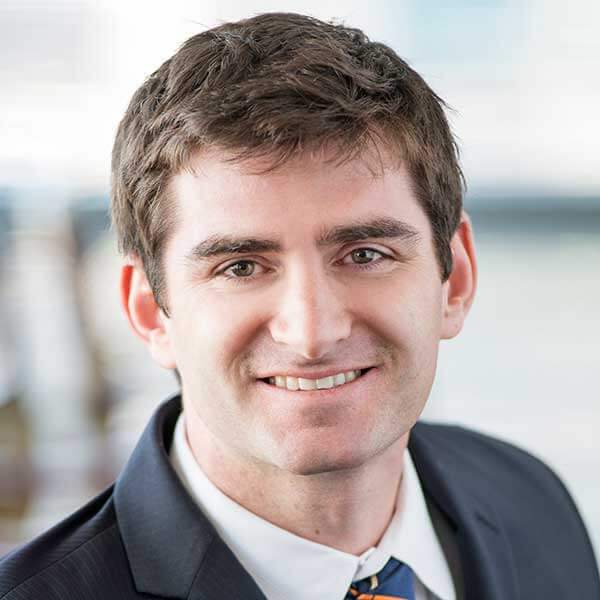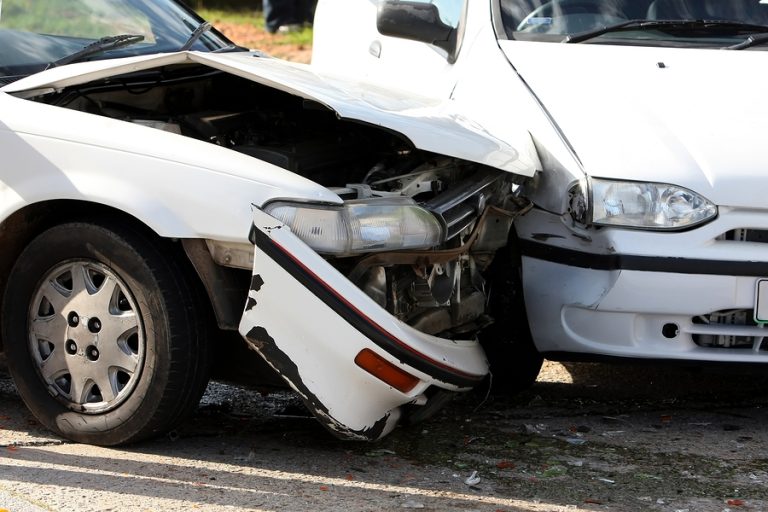Injured in an accident? Get a real trial lawyer. Get Gomez.
Organized sports provide a wealth of benefits for growing children. Kids involved in youth sports learn social and teamwork skills and they develop a sense of sportsmanship. When kids participate in sports, they are more active and often healthier, including more positive mental attitudes. Parents believe in these longstanding sports traditions. However, Chronic Traumatic Encephalopathy (CTE) has become more well understood over the last decade. To prevent CTE, parents must take a second look at their child’s participation in sports activities – especially those sports that involve contact.
The same is true for professional sports. Every weekend, fans flock to stadiums across the country. Whether their teams are winning or losing, they cheer them on and return again the following week. Neither fans nor athletes can overlook the fact that professional sports are a big moneymaker. Players, coaches, team owners and radio stations alike profit from sports fans. Unsurprisingly, professional teams fought hard against sports being linked to the cause of a debilitating injury.
CTE became newsworthy in the past few years due to forensic neuropathologist, Dr. Bennet I. Omalu’s originally controversial, but now well-accepted, findings. He discovered a previously undocumented type of brain tissue destruction and established a clear connection to repeated head trauma. Doctors representing football teams publicly disputed his findings. As time passed, Dr. Omalu and other physicians documented more brain damage that was consistent with his original findings.
Since the original diagnosis, physicians and researchers have been trying to find a solution to the CTE problem. Learn what can be done legally after a CTE accident by contacting the California brain injury attorney at the Gomez Firm.
What Is CTE?
CTE is a progressive, degenerative brain disease. It develops after repetitive head trauma endured primarily by athletes playing sports and participating in sports-related activities. The frightening thing, is that these traumas do not need to be major, repeated smaller or “micro-traumas” may be the primary cause of CTE. A history of asymptomatic bumps, jolts or blows, which physicians categorize as subconcussive impacts, may lead to CTE.
Dr. Omalu first discovered CTE while working in the Allegheny County Medical Examiner’s office. The discovery was made after conducting an autopsy on Pittsburgh Steeler, Mike Webster after his death at 50-years old. Webster had undergone significant personality and behavioral changes after he retired from the NFL.
When Dr. Omalu conducted the autopsy and examined the brain, and initially, he found nothing unusual. He confirmed that a massive heart attack caused Webster’s death. He noted no brain abnormalities. However, out of curiosity, he preserved a portion of brain tissue to be slide-mounted for closer examination.
In the article, “Recognizing the Pattern of Truth,“ in the American Medical Association publication, “Moving Medicine,” Dr. Omalu describes studying the slides months later. He saw amyloid plaques, tau protein configurations, scarred and shrunken tissues, and brain tissue destruction “like a partially demolished building….” Each slide displayed areas of random damage, a CTE trademark. When Omalu found no other medical references to the disease, he named the condition Chronic Traumatic Encephalopathy.
Diagnosing CTE
The disease develops after a person endures multiple head traumas over time. For example, multiple concussions, commonly sustained during football or other contact sports, may lead to CTE. The disease doesn’t show symptoms until years and sometimes decades after the traumas occur. With football players, symptoms of the illness often appear years after a player leaves his football career. Doctors have even found signs of the disease in men who only played football in high school.
As with Alzheimer’s disease, a doctor can only make an accurate CTE diagnosis by examining a patient’s brain after death. In a recently published study, physicians looked for signs of the condition in donated brain tissue samples. When the researchers evaluated tissues from 202 deceased NFL players, 177 displayed pathological evidence of CTE.
Before a patient dies, a physician can only speculate CTE based on a patient’s behavior and history of past head trauma. CTE brain tissue destruction causes symptoms including:
- Memory loss
- Confusion
- Judgment and impulse control issues
- Dementia
- Aggressive actions
- Anxiety
- Depression
- Substance abuse
- Difficulty executing tasks
- Suicidal thoughts and behaviors
Injured in an accident? Get a real trial lawyer. Get Gomez.
Living With CTE
In examining CTE victims, doctors struggle to identify consistencies. Football and hockey players are frequently diagnosed with Chronic Traumatic Encephalopathy. Doctors have observed evidence of the disease in retired sports professionals, and in adults who haven’t played sports since high school. Boxers were once considered “punch drunk.” Physicians now recognize the disease as CTE cell damage. Military veterans injured by explosives are also included among the victims.
Another inconsistency is that the disease doesn’t affect everyone in the same way. It is known to develop after years of playing professional sports. However, it also shows up in young players and players with limited time on the field. On the other hand, many football players with a history of multiple head traumas may show no signs of the disease.
A Life-Changing Disease
Steelers’ center Mike Webster offers a classic example of how CTE can affect the injured person’s life. As a famed Steelers center, he earned four Super Bowl rings. He was inducted into the Football Hall of Fame and earned multiple additional honors for his skills on the field. He retired from the NFL in 1991 and died just 11 years later.
His life changed dramatically during his post-football years. Webster had bouts of erratic and bizarre behavior. Those he encountered considered him to be mentally ill. He developed a substance abuse habit, which eventually led to his divorce. In many official online profiles, you still see a notation that he died of a heart attack. His family and the rest of the world learned months later that his behavior changes were likely a direct result of CTE.
Treating the Symptoms
There is no cure for CTE. However, the Concussion Legacy Foundation (CLF) suggests that patients who change their behaviors gain some degree of control over their lives. They further suggest that a person who shows CTE symptoms won’t necessarily have the disease. As their CTE Resources Page explains:
- When a person has what they believe are CTE symptoms, the best thing they can do is see the best professional they can find.
- Often CTE symptoms that are due to other causes.
- The cognitive problems, headaches, and other symptoms are often a result of sleep disorders, neck damage, and other conditions.
Dr. Robert Stern of the Boston University CTE Center recommends adequate sleep to prevent the effects of CTE and other brain disorders. The CLF further recommends exercise to improve vascular issues and nutrition to help regulate energy.
Can You Prevent CTE?
To date, all CTE-diagnosed people have had two things in common. First, while they were alive, they were all involved in organized sports. Second, each endured repetitive head traumas. These findings suggest that discontinuing participation in organized sports is the obvious answer to preventing the disease. However, that is not likely to happen.
Children throughout the world participate in soccer, hockey, boxing, and other contact sports. Professional sporting events are part of a longstanding tradition. Not to mention they generate big money for team owners, networks, and other sponsors. Despite the available CTE information, sports traditions have yet to fade away and probably never will. CTE is still a relatively new diagnosis. However, medical organizations are increasingly expressing their opinions on sports participation and CTE prevention and treatment.
Cleveland Clinic
The article, “Chronic Traumatic Encephalopathy (CTE): Prevention,” offers simple solutions for athletes to help them avoid CTE. Some suggestions include:
- Reducing the number of hits to the head
- When a brain trauma occurs, get proper medical care
- Leaving a game after an injury
- Following “return to play” recommendations
The Centers for Disease Control and Prevention
Physicians acknowledge that proper care after a concussion may reduce the chances of developing CTE. The CDC emphasizes the importance of proper care. The CDC offers six recommended steps for youthful post-concussive athletes to follow when returning to their sport. They caution that an athlete should only return to play with a physician’s approval. They should also work with the team’s certified athletic trainer, if available.
Athletes who are ready to return to their sport should gradually reintroduce more strenuous activity over weeks or months. The recommended steps include:
- Back to regular activities: a few days of activities mixed with a few days of rest.
- Light aerobic activity: light exercise to increase heart rate.
- Moderate activity: activities to increase heart rate such as moderate jogging.
- Heavy, non-contact activity: sprinting, running, no-contact drills.
- Practice and full contact
- Return to competition
The American Medical Association
The AMA has been providing guidance and recommendations ever since their member, Dr. Omalu, first diagnosed the condition. Since the initial discovery, they have established a formal head injury policy. The document, “Reducing the Risk of Concussion and Other Injuries in Youth Sports, H-470.959,“ establishes guidelines for medical professionals who care for child sports participants. The recommendations include:
- Assessing a child and adolescent patient’s readiness and “medical suitability” to participate in sports.
- Counseling youth, parents, and caregivers about the risks and consequences of CTE and other sports injuries.
- Explaining the risk of concussion and recurrent concussions.
- Promoting ways to prevent or minimize the outcomes caused by repetitive head impacts and other injuries.
An AMA Journal of Ethics article, “Should Potential Risk of Chronic Traumatic Encephalopathy Be Discussed with Young Athletes?” addresses these issues with its physician-member audience. The article acknowledges that organized sports have many benefits for young participants, including increased self-esteem and physical fitness. They also address the danger of concussions sustained early in life and the lifelong impairments they may cause.
The report discusses how researchers studied high school and college football players over a single season. They found a connection between head impacts and “microstructural changes” in their brains. The study was deemed inconclusive as college player MRIs eventually showed a return to normal.
The AMA report recommends allowing children to participate in sports counseling and decisions related to sports participation. They believe that children and their families should know the potential risks for CTE. They should understand that research regarding “causation, incidence, and risk” remains inconclusive. The report further suggests that families should periodically revisit their decision to prohibit or permit sports participation.
The Mayo Clinic
The Mayo Clinic CTE page acknowledges that the chances of sustaining a concussion injury increase after the first concussion. The organization reports that prevention should include efforts to reduce mild traumatic brain injuries and prevent any subsequent head injuries.
Injured in an accident? Get a real trial lawyer. Get Gomez.
Ongoing CTE Research
CTE has affected sports figures for decades. However, because it was only recently medically-recognized, there is still a wealth of speculation. Researchers do know that CTE occurs in sports figures and those who suffer repetitive head trauma. They also understand that it’s a selective disease. It does not occur in every individual who sustains similar repetitive head trauma. Doctors have no way to diagnose the disease in living victims and that limits the potential for treatment. However, we should expect rapid changes in the science pertaining to CTE.
In just a few years, CTE has transitioned from a disease that sports franchises didn’t want to acknowledge to a research-heavy cause. Following the late Mike Webster’s diagnosis, the disease has gained a lot of attention from medical institutions, physicians, sports franchises. Dedicated research organizations are pooling their efforts to figure out how the disease works and how to treat it.
Diagnose CTE
Diagnose CTE is the Acronym for the research organization, Diagnostics, Imaging, and Genetics Network For the Objective Study and Evaluation of Chronic Traumatic Encephalopathy. The organization is supported by the National Institute of Health. Diagnose CTE has two primary goals.
- Diagnose the disease, CTE, while the victim is still alive
- Study the potential risk factors
The organization recruits study participants to help them accomplish their research goals. They currently study men ages 45 to 74 who were NFL players and those who played varsity football in college. They also study men who have never participated in contact sports.
Legal Representation for CTE Victims and Their Families
 If a physician suspects that you sustained Chronic Traumatic Encephalopathy or your deceased loved one was diagnosed with the disease, you should consult a personal injury attorney about protecting your legal rights.
If a physician suspects that you sustained Chronic Traumatic Encephalopathy or your deceased loved one was diagnosed with the disease, you should consult a personal injury attorney about protecting your legal rights.
Because most personal injury lawyers take their cases on a contingency fee basis, you can usually schedule a free consultation to discuss your case with an attorney without any financial commitments. An attorney listens to your story, advises you about your legal options, and you decide your next step.







